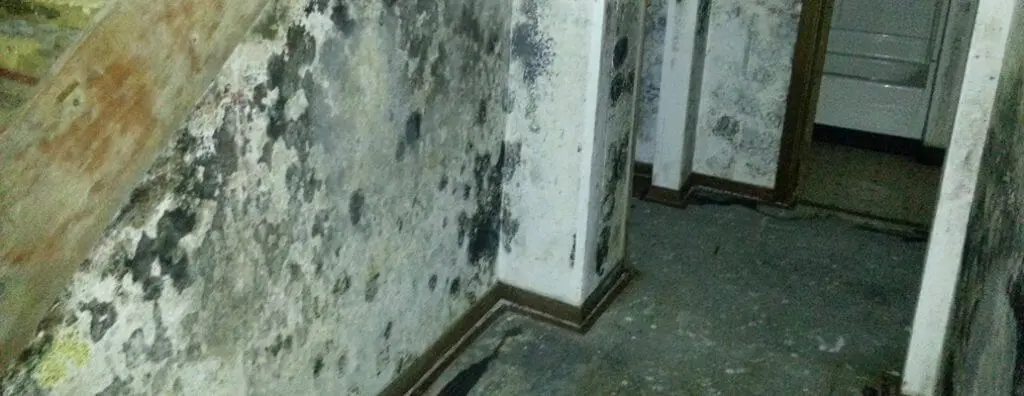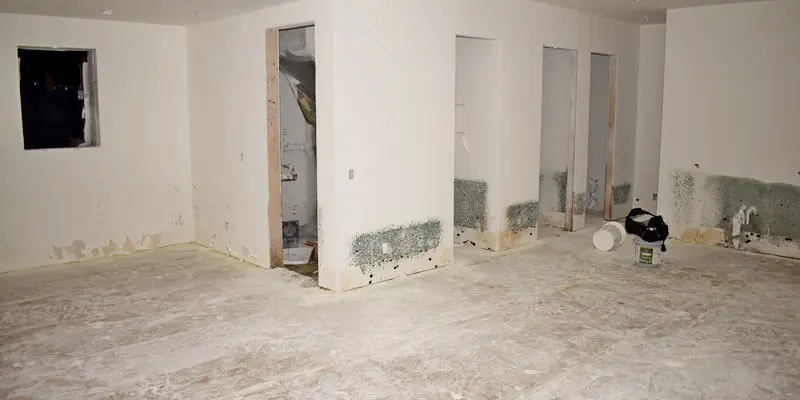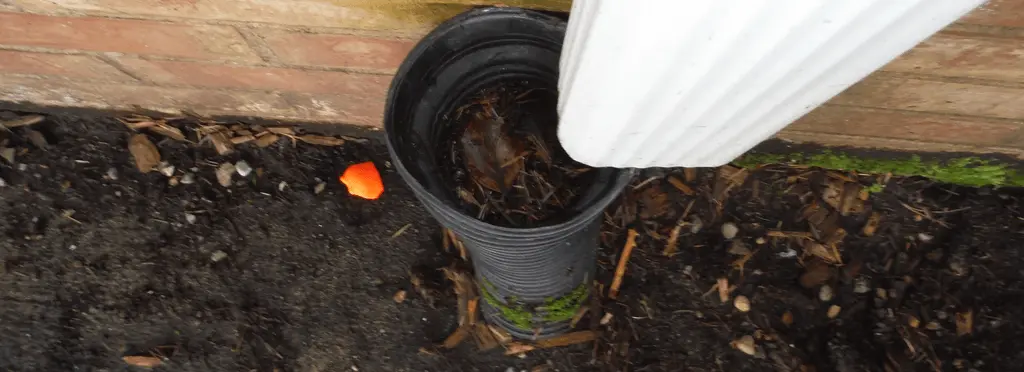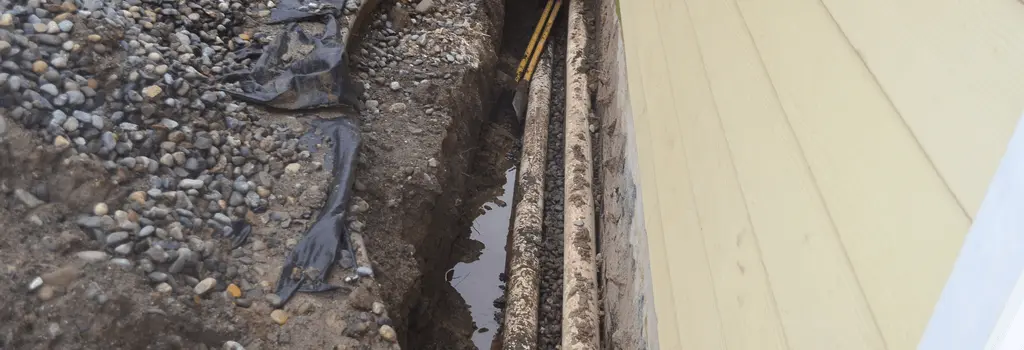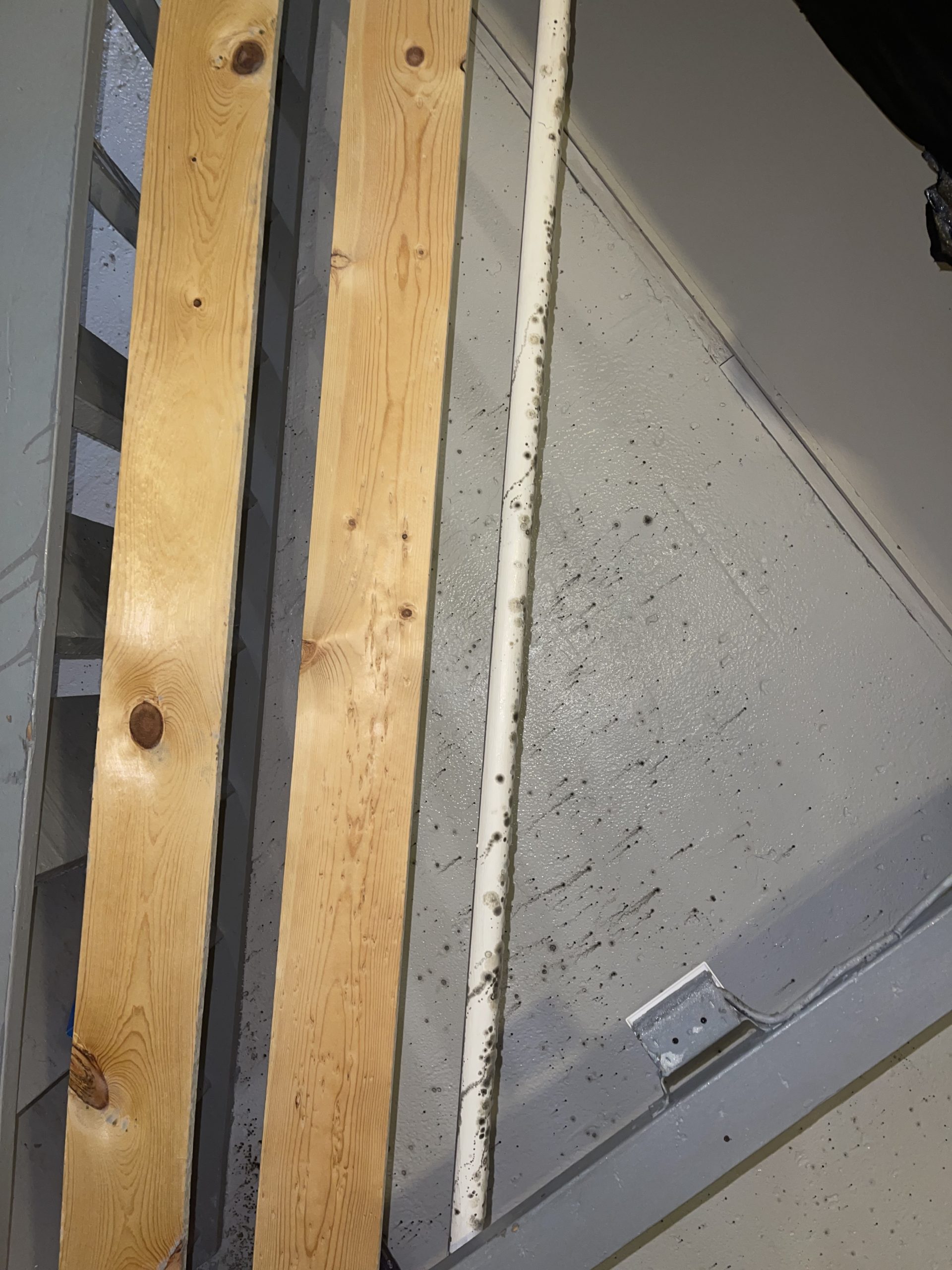Flooding in Basement & Mold Growth
Depending on where you live, basement flooding can be a common source of basement mold and indoor air quality problems.
What causes basement flooding?
The source of water in a flooding situation can range from extremely obvious (exterior flooding) to obscure (cold joint). Compounding the difficulty is the erratic nature of many leaks. A house can sit bone dry for 20 years, and without any warning, allow hundreds of gallons of water to enter. The most common points of entry are:
- Cold joint. This feature occurs when the slab floor and foundation wall are poured at different times, creating a small crack that can allow moisture to enter.
- Foundation cracks. Cracks in the vertical foundation walls can allow large quantities of water to enter a basement.
- Cracks in the slab. Pressure from the groundwater can force water up through the concrete and into the basement.
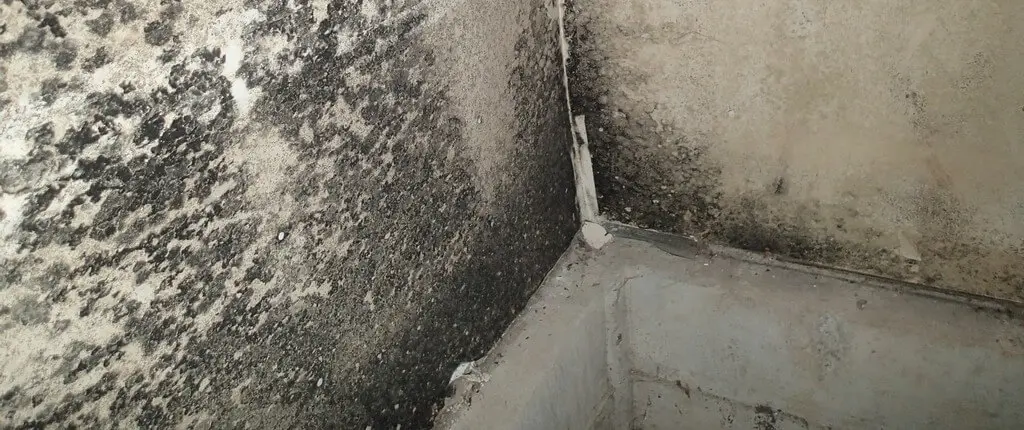
Basement Flooding lead to Mold Growth on Sheetrock
Capillary action
The vast majority of basement flooding events peak at less than 2 inches of water. Yet the damage often reaches well over a 12 inches. This is due to capillary action – the upward movement of water through porous structures. In sheetrock, the maximum varies from 15-30 inches. In practice, this wicking can produce eerily straight lines, as seen in the image below.
Mold growth is not inevitable
Thankfully, not all basement flooding events cause mold growth. The primary deciding factor in whether mold growth will occur relates to the duration of saturation. If the basement is dried out within 72 hours, mold growth is unlikely. Unfortunately, in practice this can be difficult to achieve. Often when your house is flooded, there are hundreds of other flooded homes in the area, making a fast response from a dry out company difficult.
Prevention
- Contact a water damage restoration company or mold remediation contractor immediately.
- Dry out all materials within 72 hours.
- Utilize both heat and dehumidification in the dry out process.
- Immediately remove the carpet pad.
- Test all remaining materials with a moisture meter (sheetrock, trim, underlying framing, etc.)
Groundwater sources of indoor flooding

Mold caused by ground saturation

Improper drainage can lead to damaging siding and mold inside a home
Project Report > Inspection for Mold in Basement due to Flooding
General Information
- The basement of the home had recently been flooded by ground water intrusion.
- The home owner had immediately extracted all flood water, removed carpet and padding, and disassembled all cabinetry.
Laundry Room:
- Moderate mold growth was noted on sheetrock behind laundry fixtures.
- RH: 41.2% Temp: 69.8F CO2 = 492ppm CO = 0ppm
Main Basement Area:
- Large amount of contents remained in place at the time of inspection.
- Remaining parquet flooring tests with increased moisture content and has become heavily warped and deformed.
- Sink and cabinetry is set on top of affected parquet flooring.
- RH: 38.9% Temp: 71.7F CO2 = 664ppm CO = 0ppm
Basement Bedroom:
- Water reportedly affected only a small portion of this area.
- All carpet and pad had been removed by the home owner prior to inspection.
Basement Bathroom:
- Water reportedly had no contact with this area.
*Heads up – I earn a small commission on sales through Amazon links. This helps cover the expense of running the website (and answering your questions!)
Got a question? Ask it here and we'll post the answer below
We moved into a new home with what we thought was a healthy enivronment. Since moving in ugly stains have begun to appear on the carpet. We cleaned it and a litle while later the stains were back so we pulled an area of the carpet and although the padding was new we found hygroscopic crystals. Embedded in the underneath netting of the carpet. We have also started havng various health issues if we spend time in that room. Since the. padding is obviously new and the carpet isn't does that mean the problem is in the subflooring because it wasn't cleaned properly or what do we need to replace the carpet do we need to seal the subflooring what do we do?
Carpet cleaning can ironically exacerbate stains in certain situations. For example, if pet urine was present on the carpet, the bleaching will not be revealed until the carpets are cleaned. The urine can loosen the dye from the carpet fibers. This isn’t obvious until the next carpet cleaning, when the dye is inadvertently removed by the cleaning action. In this situation the carpeting cannot be salvaged and must be replaced.
If the carpet is located on a concrete slab, other factors may be involved. Vapor emissions moving through the carpet can cause staining, mold growth and strong odors. The presence of vapor emissions can be verified by testing the concrete. Note, this can only be done during the rainy season when vapor emissions will be highest.
Is this mold and could it be harmful? My basement flooded I called to get it fixed they never came out a month later I went in basement and seen this all over the walls and railing.
Yes, this is very likely mold growth. Based on the pattern, this was due to the condensation and humidity caused by the flooding event. It is difficult to determine the potential health impact without an on-site visit. Either way, I recommend focusing on cleaning the current mold growth instead of expensive testing. Once the cleanup is completed, a post remediation verification sample is a good technique for confirming the air quality has returned to normal.

